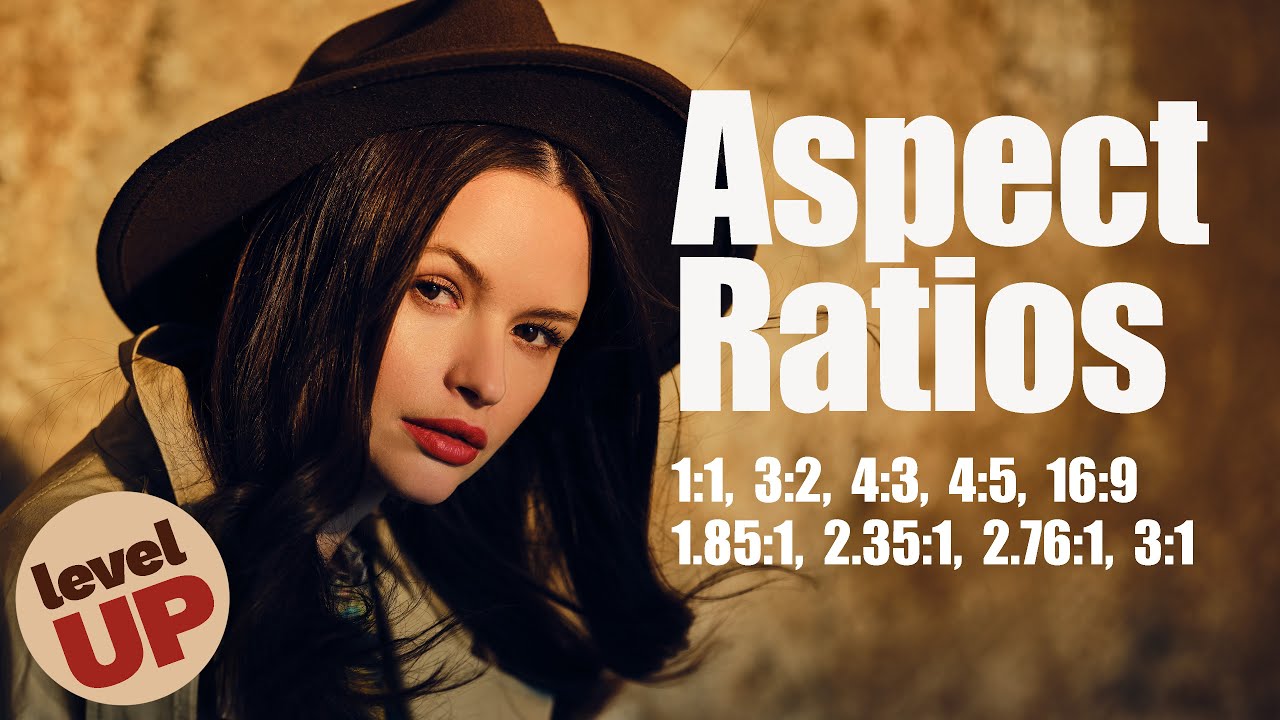Understanding Key Aspect Ratios for Stunning Photos and Videos

Aspect ratios are a crucial element in photography and filmmaking, influencing everything from lens choice to set design. Ab Sesay, an expert portrait photographer delves into the impact of aspect ratios, sharing insights and practical tips to elevate your visual storytelling.
The Impact of Aspect Ratios on Lens Choice and Set Design
Aspect ratios significantly affect how you perceive and design your frame. They influence your lens choice, set design, and lighting setup. In the studio, these elements come together to create a cohesive and visually appealing image or video.
Filmmakers and Aspect Ratios
Renowned filmmakers like Wes Anderson and Michael Bay use aspect ratios to enhance their storytelling. In The Grand Budapest Hotel, Anderson switches between aspect ratios to signify different time periods. Similarly, Bay's Transformers: The Last Knight employs IMAX 2.35:1 and 1.85:1 aspect ratios for different scenes. Understanding these techniques can help photographers and videographers choose the right aspect ratio to tell their stories.
Practical Tips for Shooting in Different Aspect Ratios
Standard Aspect Ratios
For photographers, standard aspect ratios include 1:1, 4:5, 4:3, 3:2, and 16:9. The horizontal measurement is listed first, followed by the colon and the height. Knowing these ratios helps in framing your shots effectively and avoiding the need for excessive cropping.
Camera Settings and Aspect Ratios
Most cameras allow you to shoot in different aspect ratios. This changes the aspect ratio on your screen and helps you compose your shots more accurately. For instance, the 4:3 aspect ratio of the Fuji GFX camera is ideal for vertical magazine formats, minimizing the need for cropping.
Designing a Set for Various Aspect Ratios
Designing a versatile set is essential for accommodating different aspect ratios. Ab Sesay uses multiple backdrops to create a flexible shooting environment. Overlapping hand-painted backdrops expand the shooting area, making it easier to capture wide shots from various angles without running out of background.
Lighting for Wide Shots
When lighting a set for wide shots, ensure that all lights are pulled back. Using a spotlight mixed with diffusion helps throw light effectively, and positioning fill lights out of the frame maintains a clean shot even when shooting wide.
Composing Your Shots
Social Media and Aspect Ratios
For social media, it's important to fill the frame effectively. On Instagram, a 4:5 aspect ratio works well for posts, but make sure it also crops comfortably to 1:1 for the home feed. For Instagram Reels, consider a 9:16 vertical crop to maximize screen space.
Landscape and Cinematic Crops
Landscape images often benefit from cinematic aspect ratios like 2:1 or 3:1, which reduce excess sky and ground, focusing attention on the horizon. These crops give images a more cinematic feel, making them ideal for wall displays or prints.
Practical Tips for Enhancing Your Images
Use Guides and Cropping Tools
Set aspect ratio guides on your camera's LCD screen to help compose your shots. Tools like Capture One can apply crops automatically, making post-processing easier.
Extend Backgrounds Using AI
If your capture format doesn't match your output format, extending backgrounds using AI can help maintain the integrity of your composition. This technique is particularly useful for vertical magazine formats.
Invest in Versatile Set Design
Create a set that adapts to various aspect ratios. This flexibility ensures that you can shoot wide angles and different compositions without compromising the background.
Cinematic Lighting
Lighting plays a crucial role in defining the mood and feel of your shots. Experiment with different lighting setups to create a cinematic look, enhancing the overall impact of your images.
Conclusion
Understanding aspect ratios and their impact on your photography and videography can significantly elevate your work. By mastering lens choice, set design, and lighting for different aspect ratios, you can create stunning visuals that tell compelling stories.
Remember, there are levels to this craft, and with the right knowledge and tools, you can achieve professional results.
You may also like: An Unconventional One-Light Portrait Setup




















0 comments:
Post a Comment